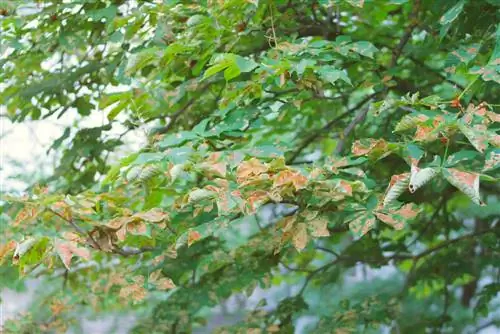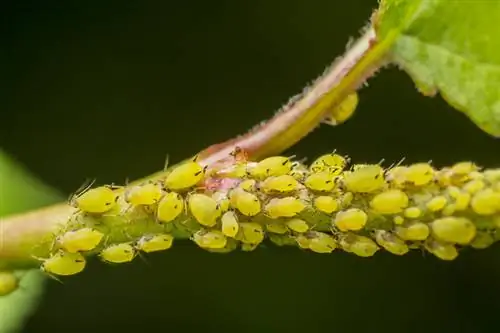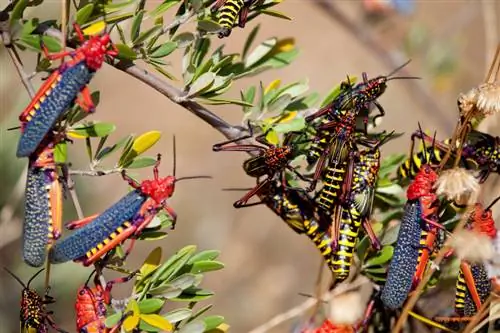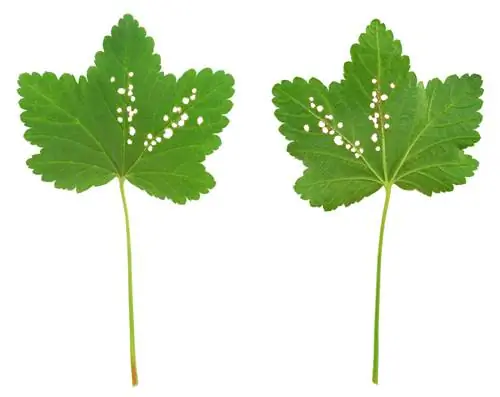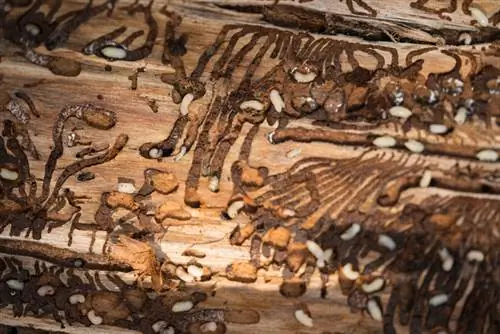- Author admin [email protected].
- Public 2023-12-16 16:46.
- Last modified 2025-01-23 11:21.
Perhaps you still remember the reports about the chestnut dieback a few years ago. Now there are still many different types of chestnuts. But they actually suffer a lot from some pests.
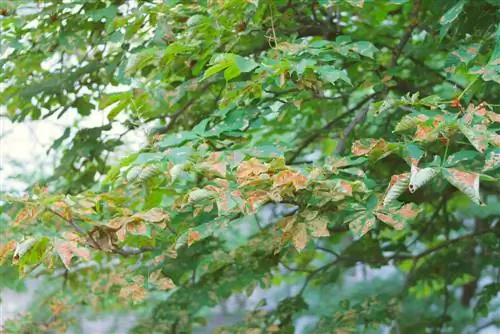
Which pests threaten chestnuts and how can you prevent them?
The most dangerous pests for chestnuts include the horse chestnut leaf miner, the chestnut borer and the chestnut moth. As a preventative measure, regularly disposing of infected plant parts such as leaves and fruits helps to limit the spread of the pests.
Which pests can be dangerous to chestnuts?
The number one pest for chestnuts is probably the horse chestnut leaf miner. It is mainly found on the foliage of the horse chestnut, where an infestation usually results in brown spots on the leaves.
The chestnut borer can cause great damage or crop failure, especially to sweet chestnuts. The females of this small weevil lay their eggs on the fruit. The larvae then eat the chestnut from the inside. With the falling fruit they reach the ground. They burrow there to overwinter.
There is an early and a late species of the chestnut moth. Both species also eat the fruit of the chestnut. While the larvae of the late chestnut moth overwinter in the ground, those of the early species pupate under the tree bark. They sometimes cause a lot of damage. Fungal infestation often follows, as the spores find an entry point through injuries to the bark.
The most important pests of chestnuts:
- Horse chestnut leaf miner
- Chestnut borer
- Chestnut Moth
Do chestnuts often suffer from fungal attack?
Weak chestnuts or injuries caused by pruning can easily become infected with fungus. Two fungi that cause the dreaded chestnut bark cancer or ink disease are particularly dangerous. Both diseases can lead to the death of the chestnut if left untreated.
How can I prevent pest infestation?
The best prevention against further pest infestation is to dispose of infected plant parts. If leaves and fruits fall from the tree prematurely, you can assume that there is a pest infestation. Collect everything regularly and do not throw it in the compost, there the larvae find ideal conditions to overwinter. If possible, burn both the foliage and the fruit.
Tip
Regular and thorough disposal of infected plant parts does not always prevent new pest infestations, but it significantly reduces them.

